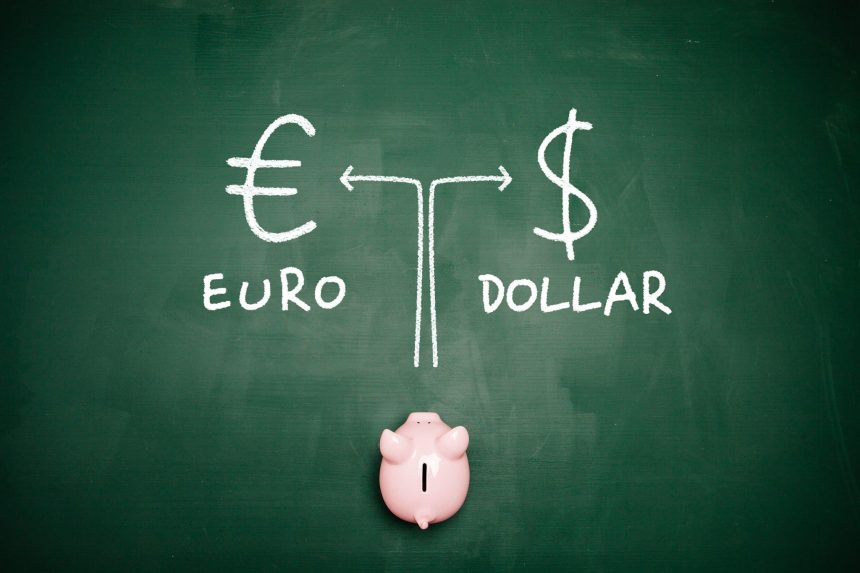EURUSD Rallies to 1.1350 as US Credit Woes Deepen and Transatlantic Trade Hopes Rise.
The EURUSD pair extended its bullish streak on Wednesday, reaching near the 1.1350 mark amid a convergence of political and economic headwinds for the US Dollar. The Euro remained resilient, gaining on safe-haven demand and optimism over potential ceasefire talks between Russia and Ukraine. Meanwhile, the US Dollar remained under acute pressure after Moody’s downgraded the United States’ sovereign credit rating from Aaa to Aa1, citing long-term fiscal risks and an expanding national debt burden.
US Dollar Suffers as Moody’s Downgrade Casts Doubt on Fiscal Health
The downgrade by Moody’s sent ripples through financial markets, casting a shadow over the credibility of US fiscal management. The rating agency pointed to the growing federal debt, which now sits at an alarming $36 trillion, and raised concerns about rising interest obligations that could challenge future economic resilience. With President Trump pushing a new $3 trillion–$5 trillion tax cut bill through Congress, Moody’s questioned whether fiscal prudence could be maintained in a politically charged environment.
Market participants interpreted the downgrade as a signal that US policymakers may struggle to rein in deficit spending. This sentiment translated into a broad sell-off in the US Dollar, with the Dollar Index (DXY) falling to 99.70, down 0.3% on the day, after paring deeper losses from the overnight session.
Trump’s Tax-Cut Bill Falters in Congress
Further compounding bearish sentiment for the USD was President Trump’s failure to rally Republican support behind his ambitious tax reform plan. In a closed-door session with GOP lawmakers on Capitol Hill, the president faced sharp resistance over provisions to raise limits on state and local tax (SALT) deductions. According to Republican Representative Mike Lawler, the sticking point is the disproportionate benefit such deductions would offer to high-tax states an issue that has long been politically contentious.
The lack of consensus within the president’s own party raises serious doubts about the feasibility of passing the proposed tax legislation, which is central to Trump’s broader economic agenda. Without legislative progress, markets are pricing in higher risks of fiscal gridlock in Washington.
Russia-Ukraine Truce Talks Give the EURUSD a Lift
On the other side of the Atlantic, the Euro found support from encouraging geopolitical developments. President Trump confirmed via Truth.Social that Russia and Ukraine would soon begin ceasefire negotiations in Vatican City. “Russia and Ukraine will immediately start negotiations toward a ceasefire,” he stated, signaling a possible thaw in a conflict that has disrupted European energy markets and supply chains for over two years.
While optimism surged in the immediate aftermath of the announcement, German Chancellor Friedrich Merz offered a note of caution, stating during a North American press conference that there is “no sign the war in Ukraine will end soon.” Nevertheless, the mere possibility of diplomatic movement was enough to fuel demand for the Euro, which tends to benefit from improved stability in the region.
A potential ceasefire would ease logistical constraints, lower energy import costs, and revive confidence in European manufacturing and exports. Given the Eurozone’s heavy reliance on imported energy and its vulnerability to Eastern European instability, any progress on the diplomatic front is a bullish catalyst for the shared currency.
ECB Dovish Bets Grow Ahead of June Policy Meeting
Even as geopolitical hope buoyed the Euro, traders continued to price in aggressive interest rate cuts by the European Central Bank (ECB) as early as June. ECB Governing Council member Mario Centeno, also the Governor of the Bank of Portugal, advocated for more substantial easing to mitigate disinflationary risks. Centeno suggested that the ECB may need to cut its benchmark rate below the neutral range of 1.5%–2% to maintain price stability and prevent inflation from undershooting the 2% target.
His remarks were echoed by the European Commission’s Spring Forecast report, which projected inflation to return to 2% by mid-2025 and average just 1.7% in 2026. These figures reflect fading price pressures and support the view that further monetary easing is justified.
This reinforces the divergence between the ECB and the Federal Reserve, with the former moving closer to rate cuts while the latter remains on hold due to inflation risks. Such divergence often results in EURUSD upside, especially in times of US Dollar weakness.
Fed Policy Stays Cautious Amid Inflation Fears and Policy Uncertainty
Meanwhile, Federal Reserve policymakers have struck a cautious tone amid mounting policy uncertainty in the US. St. Louis Fed President Alberto Musalem warned that new fiscal measures under the Trump administration could de-anchor inflation expectations, making it difficult for the central bank to initiate rate cuts. “If inflation expectations become de-anchored, Fed policy should prioritize price stability,” he stated in a speech on Tuesday.
The Fed’s hesitance to pivot dovish while the ECB prepares to cut rates enhances the EURUSD upside potential in the near term. Additionally, the uncertainty surrounding Trump’s tariff policies and tax reform efforts adds another layer of volatility to the Dollar outlook.
Eurozone PMI and US Business Activity in Focus
Looking ahead, market participants are closely monitoring the preliminary Purchasing Managers’ Index (PMI) data due on Thursday from both the Eurozone and the United States. In the Eurozone, HCOB PMI estimates suggest that business activity picked up pace in May after a slow April, with expectations for strength particularly in the services sector.
In the US, the S&P Global PMI is expected to show steady growth in economic activity. However, investor focus will likely shift toward corporate commentary, particularly on whether private sector employers are expanding capacity or adjusting their strategies due to tariffs and policy changes. Rising costs from imports, spurred by recent protectionist moves from the White House, could weigh on sentiment and hiring trends.
German Chancellor Merz Pursues Transatlantic Trade Breakthrough
In a major diplomatic development, German Chancellor Friedrich Merz confirmed a scheduled meeting with President Trump to discuss EU-US trade relations. According to reports, Merz aims to push for the removal of mutual tariffs and build momentum toward a broader transatlantic trade deal. In his statement, Merz said there are “signs the US could be interested in a deal with the EU,” hinting at potential breakthroughs after years of stagnation.
If realized, such a deal could dramatically boost investor sentiment toward the Eurozone economy, improve trade flows, and enhance the Euro’s medium-term outlook. The Euro has already reacted positively to these developments, with EUR/USD continuing to trend upward amid hopes of warmer EU-US economic relations.
Technical Outlook: Bullish Momentum Building
From a technical standpoint, EURUSD is poised to test the 1.1350 resistance zone, which marks a critical psychological level. A break above this level could open the door for a sustained rally toward 1.1400 and 1.1450, especially if upcoming data from the Eurozone beats expectations.
Momentum indicators like the RSI and MACD show bullish divergence on the daily chart, while the 50-day and 100-day EMAs have turned upward—confirming a strong short-to-medium-term trend reversal. However, any disappointment from the ceasefire talks or renewed political tension in Washington could spark a pullback toward the 1.1270–1.1300 region.
Conclusion: EURUSD Eyes Further Upside as Macro Themes Align
In summary, the EURUSD latest rally is driven by a unique combination of US economic fragility, Eurozone resilience, and geopolitical optimism. The Moody’s downgrade, Trump’s legislative struggles, and fears of unanchored inflation are undermining the US Dollar, while prospects of a Russia-Ukraine truce and improved EU-US trade cooperation are lifting the Euro. As monetary policy divergence becomes more apparent, EURUSD looks set to remain well-supported in the near term.
[faq-schema id=”39642″]









